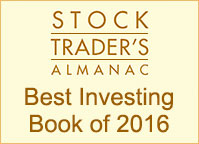The most widely followed volatility measure, the CBOE S&P 50 Volatility Index (VIX), is going nowhere. The VIX, commonly known as the fear index, closed at 11.37 today, February 6 and it is stuck below both its 50-day moving average of 12.09 and its 200-day moving average at 14.01.
Which doesn’t mean there’s no volatility or no fear in the markets. It’s just not reflected in the market for puts and calls on the S&P 500.
Other measures, however, are flagging uncertainty in the financial markets. Some politically-inclined analysts are, for example, looking at the gap between the VIX and the Global Economic Policy Uncertainty Index. It’s now at its highest level on record. Others, unwilling to give up on the VIX completely, are looking at the CBOE Skew Index, which measures the price of buying protection against more dramatic moves in the S&P 500. The VIX itself may not be signaling an increase in worry but investors are willing to pay to hedge the more extreme if less likely downside outcomes in the tail of the bell curve.
And then gold. We all know that gold doesn’t go up when interest rates are expected to rise–except when expectations for inflation–which is good for gold–and worries about market uncertainty outweigh expectations for rising inflation.
And, strikingly, that’s where we seem to be now. The yield on the 10-year U.S. Treasury has climbed to 2.44% from 1.77% since the November election.
But gold, rather than wilting is showing solid strength. Gold and silver ETFs are among the best performers on a 1-month and year-to-date basis on fears that inflation in the United States and other economies, such as Germany, is showing signs of breaking out of its target bounds. Gold mining stocks tend to be more volatile than the price of gold bullion ETFs (such as GLD, the SPDR Gold Trust) since the costs of miners are relatively fixed making a change in gold prices a huge deal for their bottom lines. The Juniors are more volatile than the bigger companies in the VenEck Vectors Gold Miners ETF (GDX) because their balance sheets tend to be more leveraged and the stocks themselves are riskier. Decide for yourself how much risk you want to add to your portfolio. The VanEck Vectors Junior Gold Miners ETF was up 7.72% today. The senior ETF climbed “just” 3.67%.
Before we leave the subject of gold and volatility, however, there’s one pattern worth mentioning. Most of the time, indeed, gold falls when interest rates rise. Logical. However, when inflation fears are enough to overwhelm fears of an interest rate increase, the combination can signal a negative move in the market. Three consecutive quarters of rising benchmark bond yields and rising gold prices preceded previous market falls including the 1973-1974 bond market crash and Black Monday in 1987, Chris Flanagan at Bank of America told Bloomberg. The yield on the 10-year Treasury has climbed to 2.44% from 1.77% since the November election. Gold, which has been among the best performers in the shorter term, has moved sideways in that longer period.
Something to watch.




